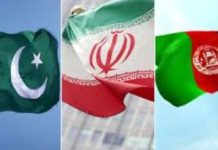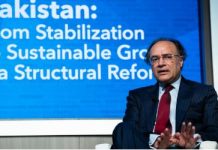By Syed Ali Nawaz Gilani
The Communist Party of China (CPC) which is under constant fire of western media and US President who have been mentioning it time and again, especially during the COVID 19 tenure.CPC is going to complete 100 years of its establishment in July 2021. Maintaining political grip since its inception almost ten decades ago, the CPC has witnessed country’s rapid economic growth and rise as a global power: facing challenges abroad and at home simultaneously, during the times of crises like economic inequality and the coronavirus pandemic.
The present escalating row between US & China over blame for the coronavirus pandemic is fast becoming a battle over the CPC’s legitimacy, raising the stakes in an already fraught relationship. In castigating China for its failure to contain the outbreak, senior US officials have gone out of their way to portray the crisis as a deadly illustration of the threat that Communist party rule poses the Chinese people – and the world beyond.This need to know about CPC and its functioning, role and strength.
President Xi Jinping, who is the supreme leader of the CPC has acquired power in 2012, has accrued more political power than any Chinese leader since Chairman Mao Zedong.Xi has amassed vast authority after being named party general secretary in 2012, effectively becoming leader for life. He took over as leader of the military to head party bodies that oversee economic reform and other important issues.It was a break with two previous generations of leadership, which were based on consensus among members of the ruling party’s inner circle of power, the Standing Committee.That has allowed Xi to push through ambitious plans, including the multi-billion-dollar Belt and Road Initiative, to expand trade by building ports, railways and other trade-related infrastructure across Asia, Africa and the Middle East.
Undoubtedly, inspired by the Russian Revolution, the CPC was founded in 1921 on the principles of Marxism-Leninism. Tensions between the Communist party and the nationalist Kuomintang, its primary rival, erupted into a civil war from which the Communists emerged victorious in 1949. Despite China’s market reforms in the late 1970s, the modern Chinese state remains a Leninist system, like those of Cuba, North Korea, and Laos.
Since 2012 President Xi Jinping came to power, he has consolidated his control over the infamously party, with many experts calling him the most influential Chinese leader since Mao Zedong. In 2017, the CPC reaffirmed President Xi Jinping’s dominance and elevated new officials to support him in setting the agenda for the one of the largest economies in the world.
The CPC relies on three pillars: control of personnel, propaganda, and the People’s Liberation Army. Around 70 percent of its nearly ninety million members are men; farmers, herdsmen, and fishermen make up roughly 30 percent of its membership.
The CPC convenes its National Party Congress (NPC) every five years to set major policies and choose the Central Committee, which comprises around 370 members and alternates including ministers, senior regulatory officials, provincial leaders, and military officers. The Central Committee acts as a sort of board of directors for the CPC, and its mandate is to select the Politburo, which has twenty-five members.
In turn, the Politburo elects through backroom negotiations the Politburo Standing Committee, which functions as the epicenter of the CPC’s power and leadership. The Standing Committee currently has seven members, but membership has ranged from five to nine people. Xi, who took over from Hu Jintao in 2012, sits atop the system as general secretary. He is also the president and head of the military, exerting enormous influence in setting government policy. The premier, Li Keqiang, heads the State Council, China’s equivalent of a cabinet.
As long as China’s power politics & its transition are concerned, the party leadership succession is decided through internal negotiations. These complex dynamics can be seen in Xi’s extensive anticorruption campaign. While corruption crackdowns are not uncommon following a transfer of power, the scope of Xi’s campaign has been unprecedented and with these initiatives President Xi Jinping is targeting some two million officials since late 2012. Experts argue that the antigraft movement, though extremely popular among Chinese people, may alienate some elites and paralyze governance at lower levels for fear of falling under the party corruption watchdog’s suspicions.
The 18th Party Congress in 2012 marked the peaceful transition of China’s leadership from Hu to Xi, then the 19th congress in 2017 solidified Xi’s ascent as a decisive leader. In the reform era that followed the death of Chairman Mao and his personality cult, Deng Xiaoping steered the party from strongman rule to consensus rule (or even collective leadership) among the elite and institutionalized the transfer of power from one leader to the next, with each president serving a maximum of two five-year terms. These principles had dictated leadership succession since the early 1980s.
In March 2018, the congress amended China’s constitution to roll back term limits for China’s president, paving the way for Xi to remain officially in power beyond 2022.
No doubt that CPC is in firm control of the People’s Republic of China and transformed China from less developed country to one of the most scientifically advanced country of the world. The CPC decision making is based on democratic Centralism and has not only succeeded in feeding more than one billion Chinese people but has considerably raised their living standard. We can rightly mention CPC as a force behind China’s Social, economic and political power. (Mr. Syed Ali Nawaz Gilani is Secretary-General Pakistan-China Friendship Association Khyber Chapter & President Radio China Listener’s Club his email syeed,[email protected])











